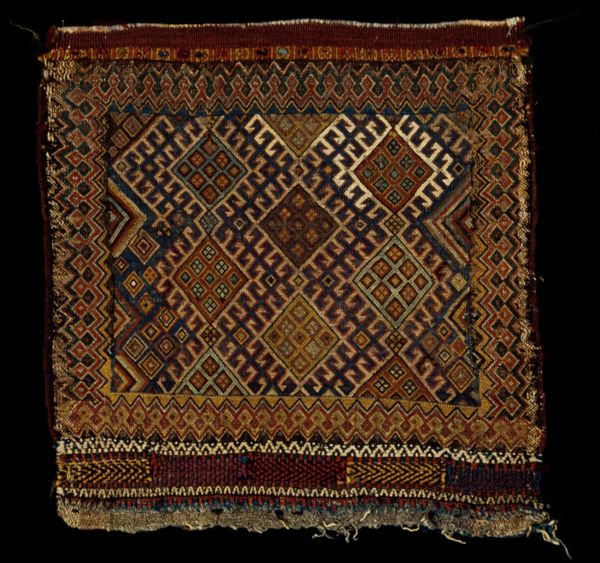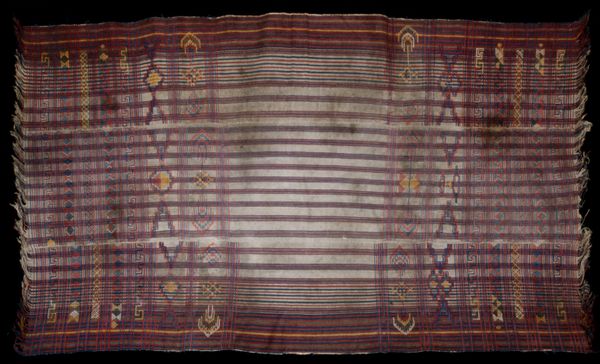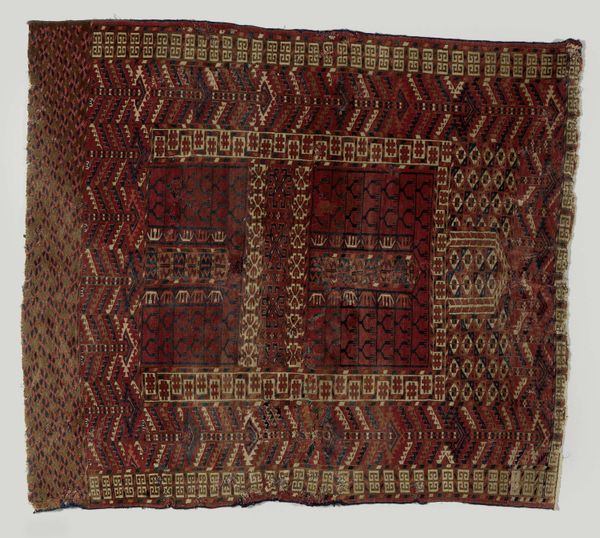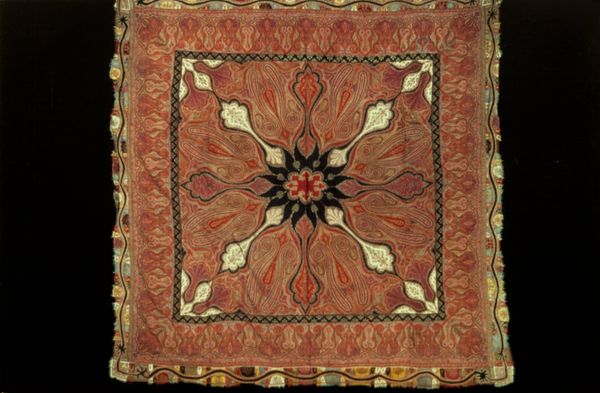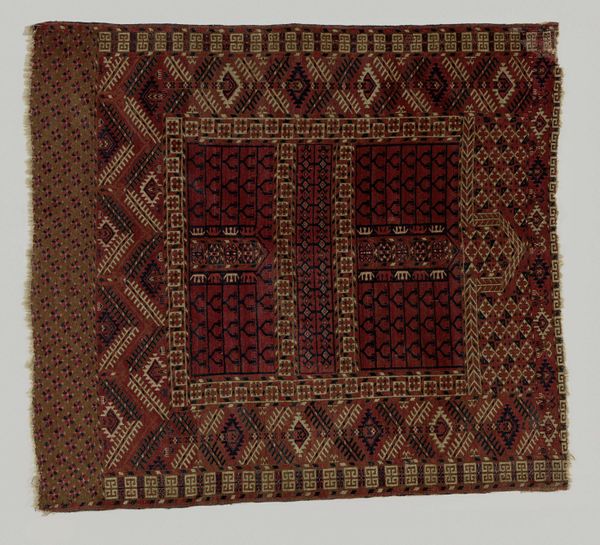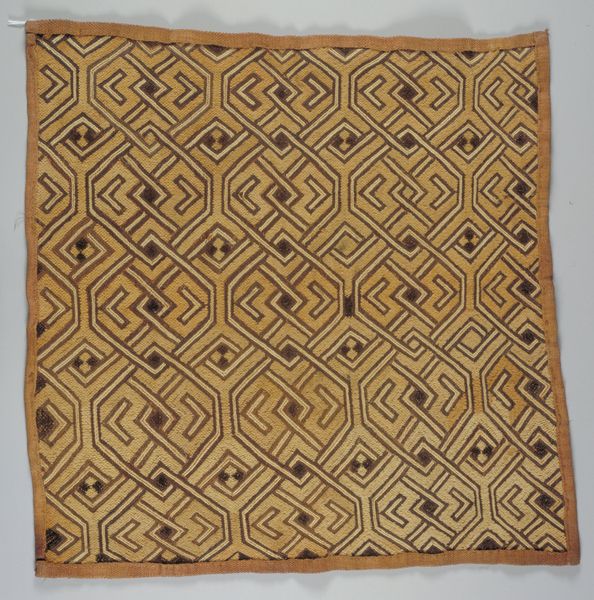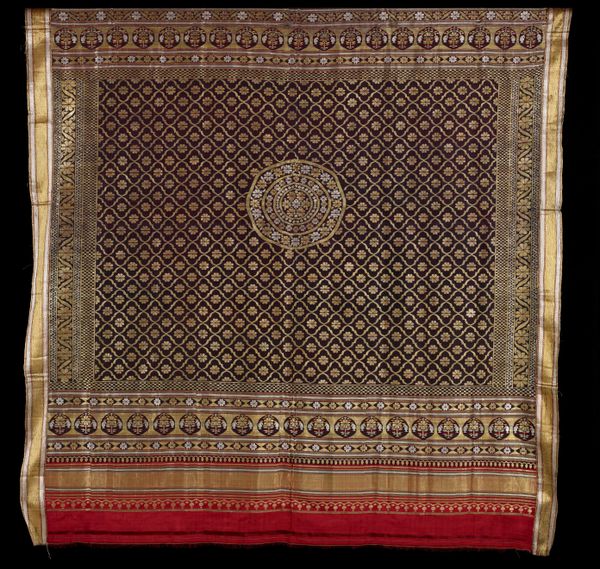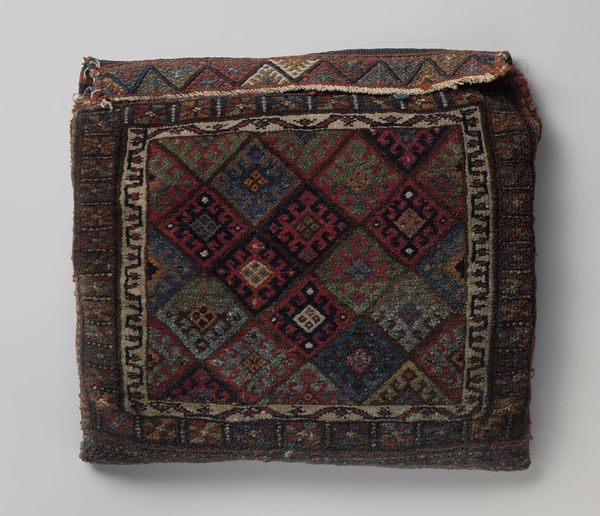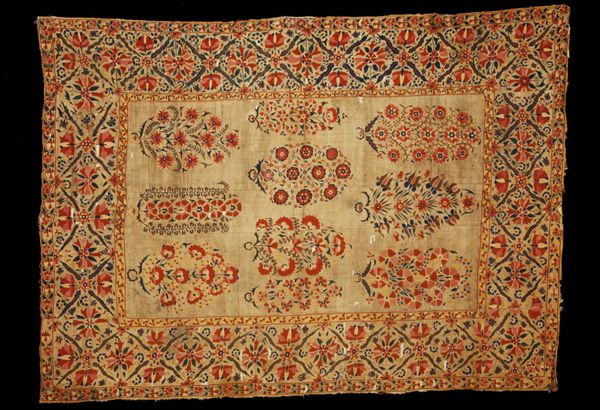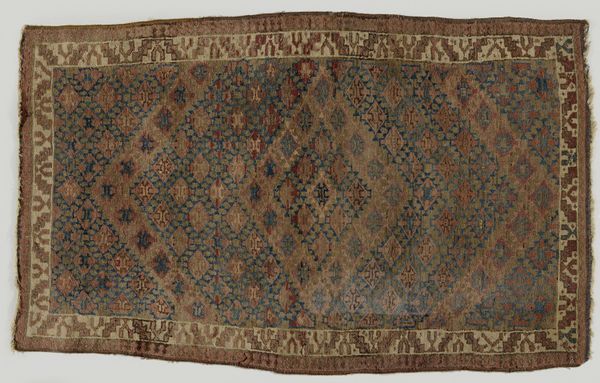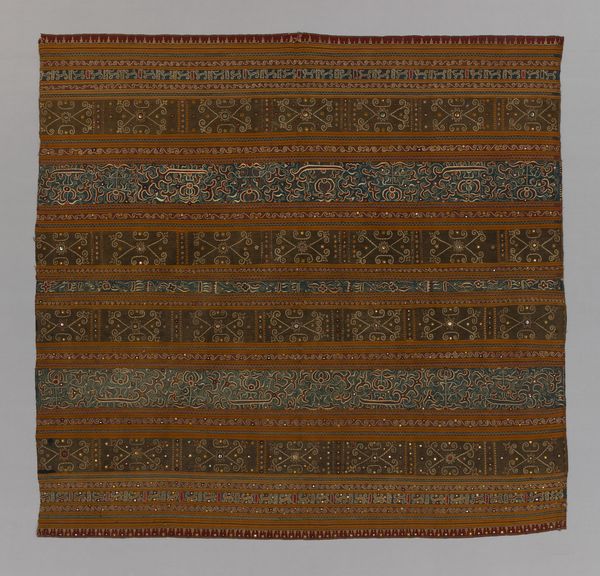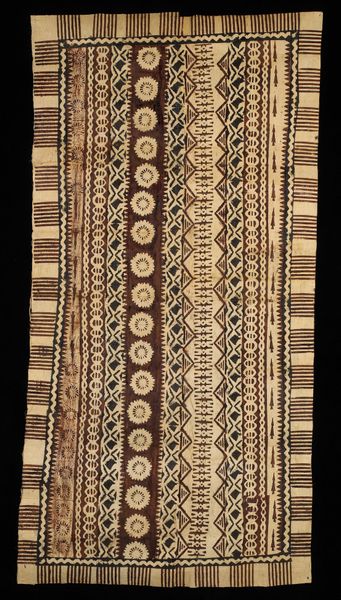
fibre-art, weaving, textile
#
fibre-art
#
textured
#
weaving
#
textile
#
geometric
Copyright: Public Domain
Curator: We're looking at an intriguing "Saddle bag," a textile work dating to around the 19th century and currently held in the Minneapolis Institute of Art. Editor: Immediately striking. The intricate diamond pattern creates such a visually rich and texturally compelling surface, especially considering its original utilitarian function. Curator: Exactly. And the term "utilitarian" is key here. While on its surface it is a "Saddle bag" woven from wool, a seemingly functional item, the abstract geometric motifs speak to larger questions of trade and cultural exchange that took place between Indigenous communities across the Americas. Editor: I see that. And these repeating geometric forms--what appear to be variations on a diamond--give a sense of structured play, of the kind of complex formalism we associate with textiles. It creates depth and almost an optical effect through the shifts in color and value. Curator: I would emphasize that this weaving is far from optical illusion. The craft practices and designs were deeply interwoven with indigenous social and economic systems, a symbol that encapsulates much broader negotiations that these populations navigated on a daily basis. Editor: Certainly. These kinds of patternings may carry a social history of identity but it seems too, we might also consider the visual vocabulary employed--the relationship between color, ground, and pattern as part of that expressive tradition. Curator: Right, and considering its placement on a saddle, it was on full public display as a marker of status, kinship, and alliance for its owners. Editor: The tension between abstraction and cultural signal certainly deepens the impact. A successful commingling between material, form, and message. Curator: Indeed. When we start thinking about it not just as an aesthetic object but a vital part of a network of social and material relationships, it enriches our appreciation of its purpose. Editor: A reminder that aesthetic contemplation should lead back into considering cultural context. Curator: Yes, I think in considering it as a cultural artefact, we give depth to those considerations of colour and space you spoke about, which enables further conversation and inquiry.
Comments
No comments
Be the first to comment and join the conversation on the ultimate creative platform.
